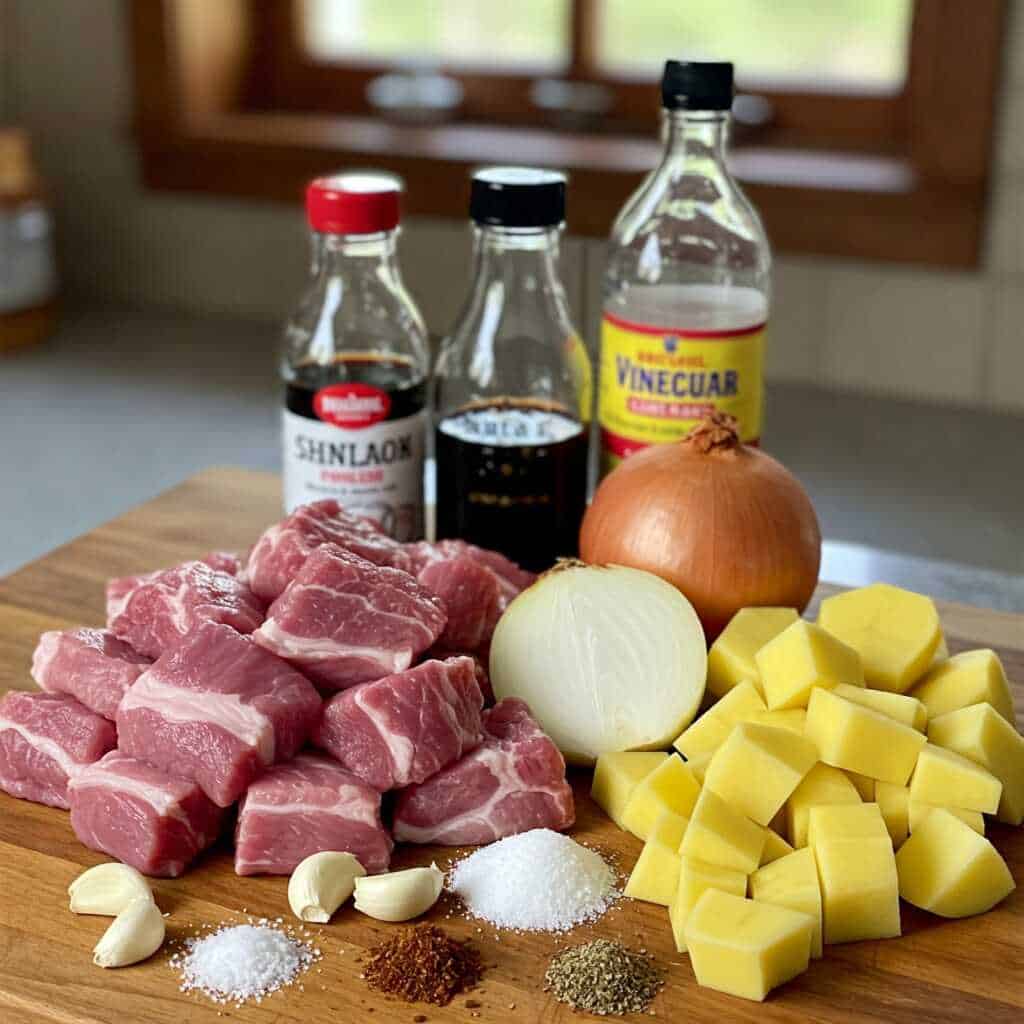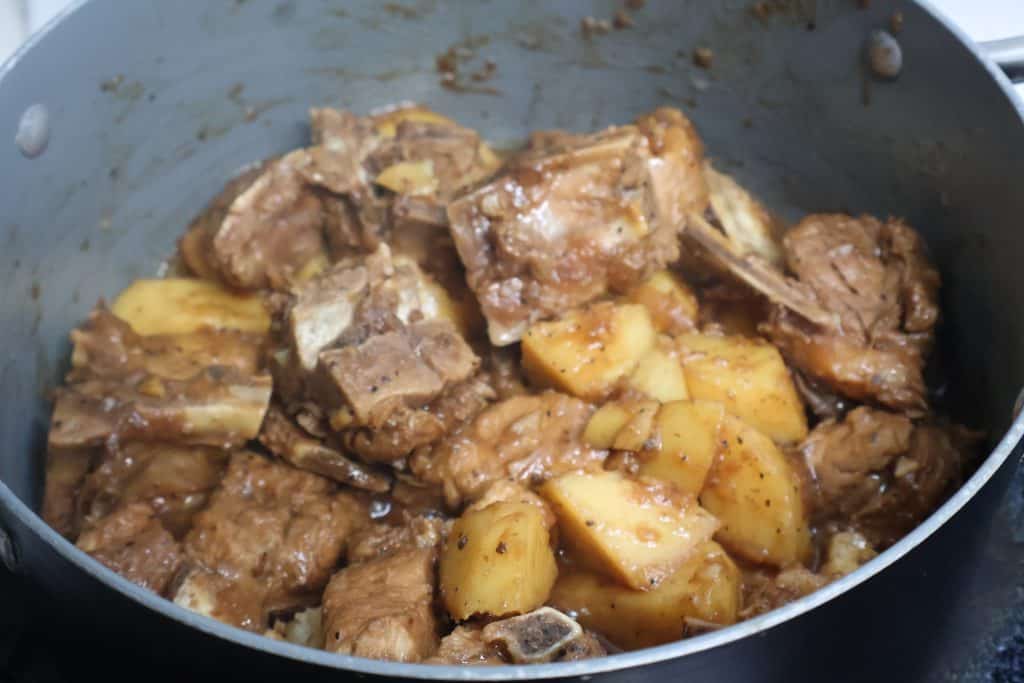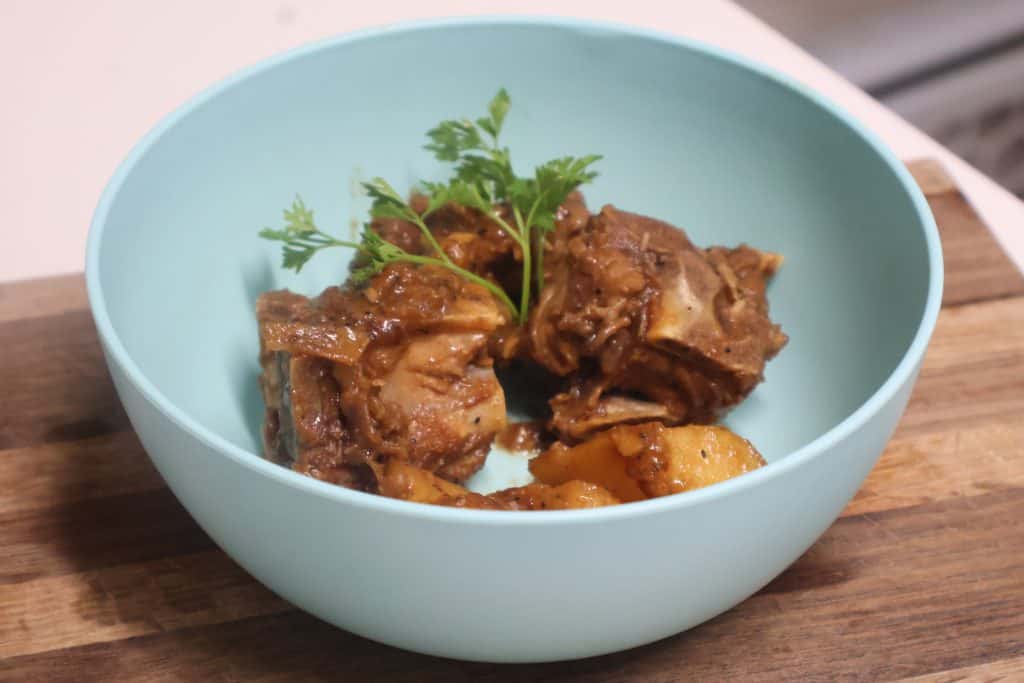The Pork Adobo recipe is one of the Filipino’s pride dishes. It is either chicken meat or pork or the mix of both cooked in soy sauce, vinegar, garlic and onion as the main ingredients.
A side story, when my fiancé and I just started talking, we talked about different Filipino and Puerto Rican food. The first dish I introduced to him was the famous pork adobo recipe as this is one of Filipino trademarks. He told me that they also have abodo. At first, I was amazed that we both have this.
However, it was funny because it is not the same dish but a famous seasoning they used in Puerto Rico.
Table of contents

Ingredients:
- 2.4 lbs. Pork Ribs in cubes (any part will do)
- 5 gloves of garlic (the more the garlic the better
- 1 pc onion
- 80 ml soy sauce
- 160 ml vinegar
- 1 tsp salt
- 1 tsp sugar
- 3 tsps. oyster sauce
- Ground pepper
- Water
- 2 pcs medium potato cut in cubes (optional)
Procedure:
- In a pan put the meat, soy sauce, garlic and pepper. Mix well until the meat absorbs the liquid.
- Set the fire in low or medium heat until the pork is slightly tender. Setting the fire high at the beginning makes the meat harder and chewy.
- Season with salt if you think the soy sauce is not salty enough. Mix and let it continue to simmer until the liquid dried up a little.
- Add water as much as needed to ensure the pork adobo recipe remains tender.
- When the meat is fully cooked and can detached from the bones (in this case because I used rib part), add the potatoes. Check if the water is enough to cook the potatoes, if not add water as needed.
- Add pepper and salt to taste or as needed. Add the oyster sauce.
- Add sugar if the potatoes are nearly cooked. Mix and remove from the fire when cooked.

I prefer this dish dry but if you prefer it with sauce, it is perfect too. Pork adobo is best served with white rice. I am sure 1 cup of rice is not enough. Enjoy!!!😊

Pork Adobo recipe History:
One historical fact about Filipino pork adobo is that its cooking method, which involves stewing meat in vinegar, soy sauce, garlic, and peppercorns, predates Spanish colonization.
Before the Spanish arrived in the Philippines in the 16th century, Filipinos were already using vinegar and salt (which was later replaced by soy sauce) as primary methods for preserving food. The indigenous cooking process of simmering meat in vinegar and spices was observed and noted by early Spanish colonizers. They referred to this dish as “adobar” because the cooking method was similar to Spanish adobo, which also involves marinating and stewing meat in vinegar, garlic, and paprika.
However, it’s important to note that while the Spanish recognized the similarity in cooking technique and gave it a familiar name, the Filipino adobo was an independently developed culinary practice rooted in the need for food preservation in a tropical climate. The introduction of soy sauce by Chinese traders later enriched and diversified the flavor profile of what we now know as classic Pork Adobo recipe.
Recommendations:
Filipino-style sopas recipe: a hearty and delicious soup.
Pork Adobo recipe – One of Filipino’s pride dishes.
Arroz Caldo recipe – A classic Nanay’s breakfast delicacy.
Authentic chicken afritada recipe: a classic Filipino dish.
Maja Blanca recipe – A delicious desert similar to the Tembleque (Puerto Rican coconut dessert).







